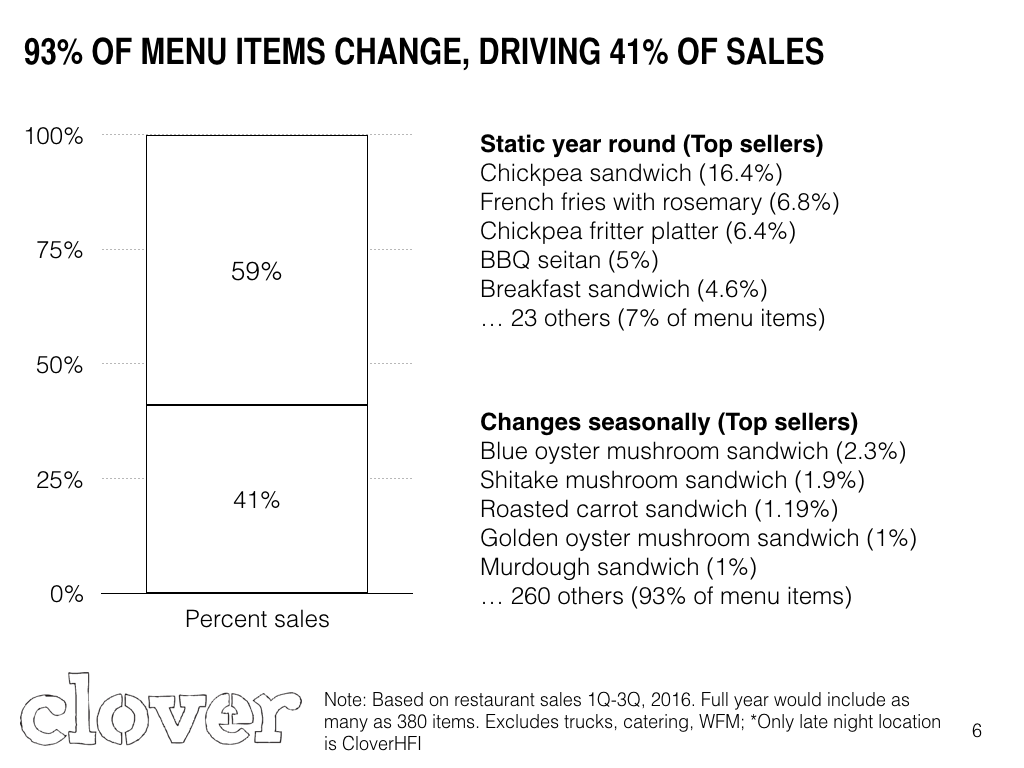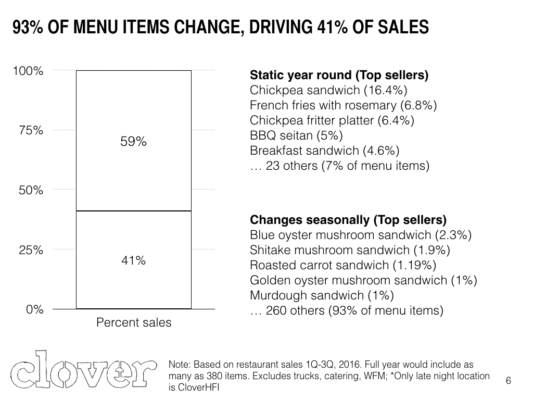
I’m preparing some documents for investors and I’ve taken a crack at breaking down our sales mix. This is roughly where it has been for a while, but I’m not sure I’ve shared on the website and I thought you all might be interested.
About 93% of our menu items exist on our menu for a limited period of time. We buy produce when it’s at it’s peak. And that’s not 4 seasons a year. It’s growing seasons, which can be as short as a few days. Some items (e.g., apples) we can get for months.
The remaining 7% of our menu is static year round. We’ll still buy local items when we can (e.g., The Chickpea Fritter Sandwich is available year round, but the bread has local grain, the tahini is locally sourced, the carrots, cabbage, red onions, and even garlic and herbs on the chickpea fritter will be sourced locally based on time of year).
This approach means that between $0.40 and 0.90 (depending on time of year) of every dollar we spend on food goes directly to our regional food system. That’s a big deal.
It’s also the reason things taste so amazing. Taste is all about ingredients.
The largest change we’ve seen over time is the proportion of sales driven by the changing items. At the start only a small portion of our menu changed (mostly soups). But over time more and more of our menu has started changing. I’m hoping someday to make a couple of those mainstays (Egg and Eggplant Sandwich for example) seasonal. But that’s a scary thing to do.
Some of you might note that some favorites (Japanese Sweet Potato, Brussels) are missing from the list of top sellers. That’s because this data is from the first 3 quarters of the year. Those sandwiches hit the fourth quarter and just don’t show up here.
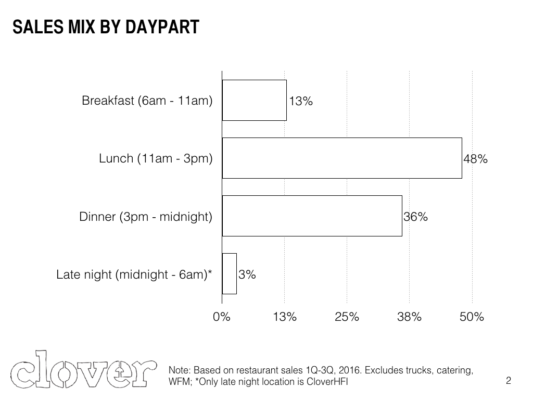
We make most of our sales at lunch and dinner. Note that breakfast is a little bigger than it looks. People spend less money on breakfast, so while the dollars are smaller as represented here the actual transactions are pretty large.
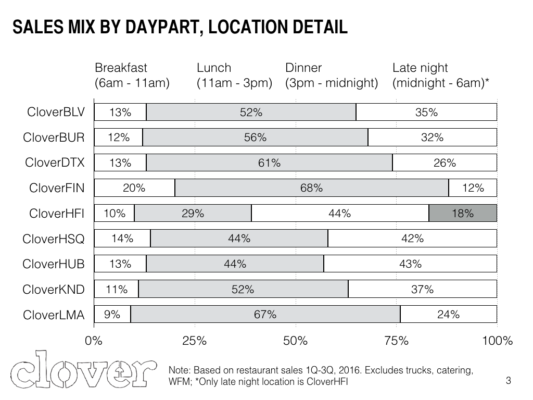
The mix differs by location. In part this reflects the maturity of our restaurants (dinner grows over time and LMA and FIN and DTX are brand new). It also reflects the neighborhood for each restaurant.
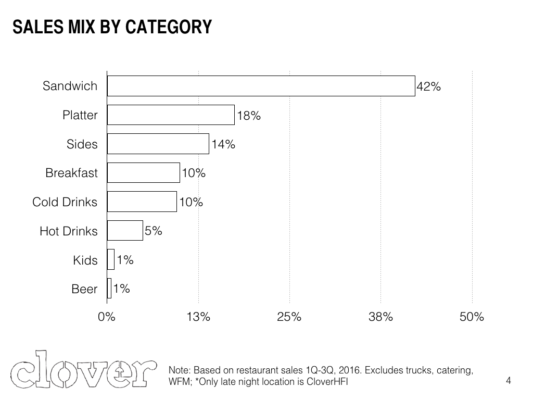
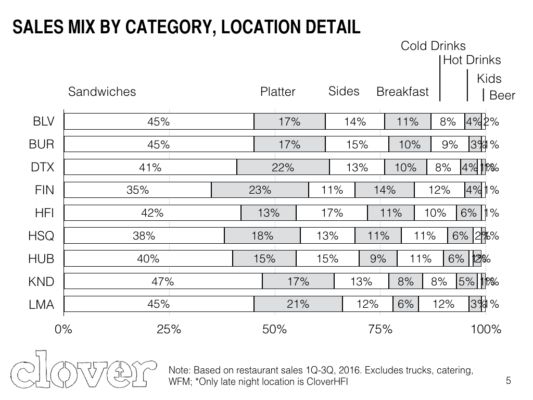
We’re mostly a sandwich business. That shouldn’t be a surprise to anybody. When I started Clover my goal was to feed as many people as possible. I’d done research that showed out of home meals were on the rise. The fastest growing segments were Fast Casual and Fast Food. Those categories are dominated by lunch sales. And lunch sales are dominated by Sandwiches, Salads, and Soups. So that’s pretty much how we ended up here.
Compared to other Fast Casual we have more dinner sales. A LOT more of our menu changes, an obscene amount. And compared to most we have fewer items for sale at any given time.

